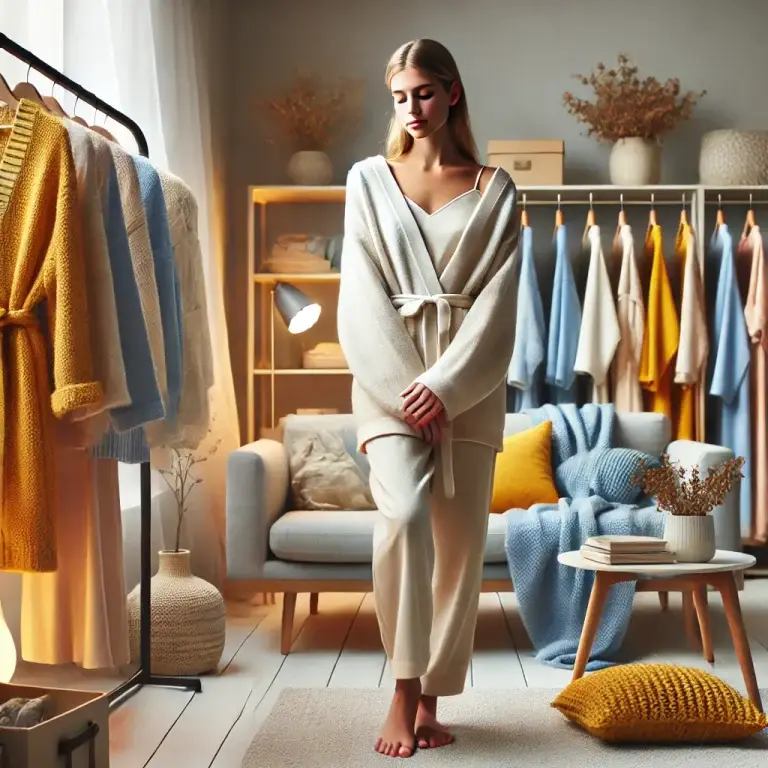
In today’s fast-paced world, where personal identity and well-being are often tested by external pressures, fashion offers a unique form of self-expression and emotional release. Clothing is more than just fabric; it’s an extension of who we are and how we present ourselves to the world. The relationship between fashion and mental health is becoming increasingly recognized, as what we wear can significantly impact how we feel, helping to boost confidence, creativity, and even emotional resilience.
The Therapeutic Role of Fashion
For many, fashion is more than just following trends or keeping up with styles; it’s a way to take control of their personal narrative. What we choose to wear is a reflection of our mood, aspirations, and identity. Fashion allows individuals to express their innermost feelings, whether it’s through bold prints that reflect confidence, cozy loungewear for comfort, or bright colors to lift a dreary mood. Studies show that wearing outfits that make us feel good can enhance our self-esteem, creating a positive feedback loop between our outward appearance and our mental state.
When we dress in a way that reflects how we want to feel, it can trigger a psychological boost, similar to the effects of self-care practices. Just as a new haircut or skincare routine can refresh our outlook, a well-chosen outfit can transform how we approach the day. This concept, often called “enclothed cognition,” suggests that the clothing we wear can directly influence our mental processes, emotions, and behaviors.
Comfort-Driven Trends in a Post-Pandemic World
The recent global pandemic dramatically shifted our relationship with fashion, putting comfort and emotional well-being at the forefront. With many people working from home and navigating unprecedented levels of uncertainty, the rise of comfort-driven trends like loungewear, athleisure, and oversized, soft fabrics made perfect sense. These pieces aren’t just about physical comfort but provide emotional security as well.
Loungewear, for example, became the uniform of mental health care. It allowed us to feel at ease while facing the uncertainty of the world, blurring the line between self-care and style. Athleisure’s popularity also skyrocketed as more people adopted a wellness-first mindset, prioritizing fitness and mental health. These trends show that fashion can adapt to support not just our physical needs but also our emotional well-being.
Color Psychology: Dressing for Your Mood
One of the most direct ways fashion influences mental health is through color psychology. Colors evoke specific emotional responses, and wearing particular shades can help improve mood or reduce stress. For instance:
- Yellow is associated with happiness and optimism, often uplifting one’s spirits.
- Blue tends to promote calmness and serenity, making it a go-to choice for days when you need peace.
- Red can increase energy levels, boosting confidence and power in professional settings.
- Green is a calming, balancing color that promotes harmony and renewal.
By incorporating colors into your wardrobe strategically, you can tap into their psychological effects to enhance your mood, increase focus, or calm your mind. This method of dressing to reflect or shift your emotional state can be an empowering tool in maintaining mental wellness.
Fashion as Self-Expression and Creativity
For many, fashion provides a creative outlet—a way to communicate without words. Putting together outfits, trying new styles, and exploring fashion trends can help people manage anxiety, stress, or depressive moods. The act of dressing with intention fosters a sense of control in situations where we may otherwise feel powerless. Fashion gives us the freedom to explore different facets of our personality, allowing us to present the world with various versions of ourselves.
Moreover, the community aspect of fashion—the way it brings people together—should not be underestimated. Social media platforms like Instagram and TikTok have provided spaces where individuals can share their personal styles, bond over trends, and express their creativity. For many, fashion serves as a form of connection and validation, helping to combat feelings of loneliness or isolation.
Building a Wardrobe for Mental Well-Being
Fashion as a tool for mental health care starts with building a wardrobe that aligns with both your emotional needs and your personal aesthetic. Consider the following tips:
- Comfort is Key: Invest in clothing that feels good to wear, both physically and emotionally. Soft fabrics, flexible fits, and cozy materials can soothe and comfort during challenging times.
- Incorporate Uplifting Colors: Fill your wardrobe with colors that make you feel happy, calm, or energized. Pay attention to how certain hues impact your mood and dress accordingly.
- Experiment with Personal Style: Use fashion as a playground for creativity. Don’t be afraid to try new styles or bold trends, especially if they help you express an unexplored side of yourself.
- Prioritize Fit and Function: Choose clothing that makes you feel empowered and comfortable. When your clothes fit well and serve a purpose, it can significantly boost your confidence.
Final Thoughts: Fashion’s Role in Mental Health
Fashion and mental health are intertwined in ways we are just beginning to understand fully. What we wear affects how we feel, and how we feel influences what we choose to wear. By recognizing fashion as a tool for emotional expression and well-being, we can take control of our mental health in small but meaningful ways. Whether it’s the comfort of a cozy sweater, the confidence of a sharp blazer, or the joy of wearing a favorite color, fashion has the power to uplift, empower, and heal.
So the next time you open your closet, think about how you want to feel, and dress in a way that honors that. Fashion is not just about looking good—it’s about feeling good, too.
